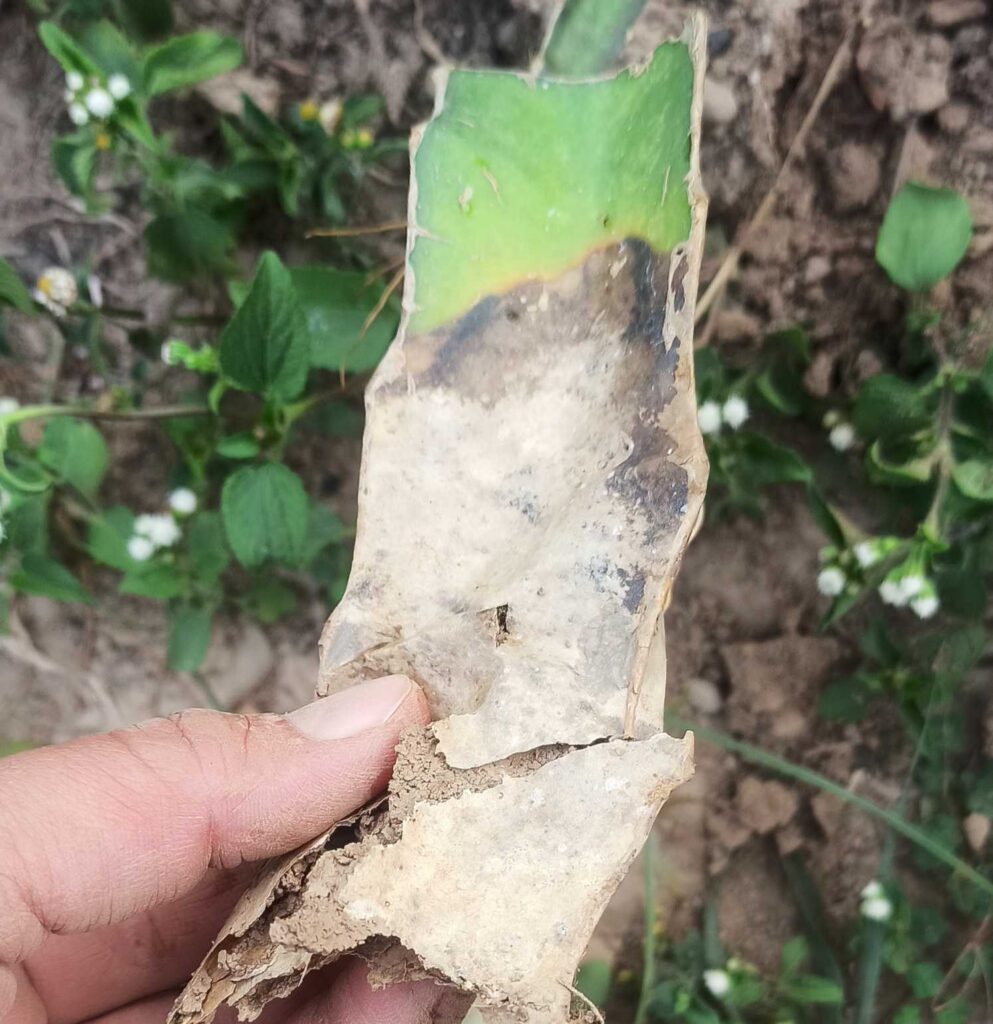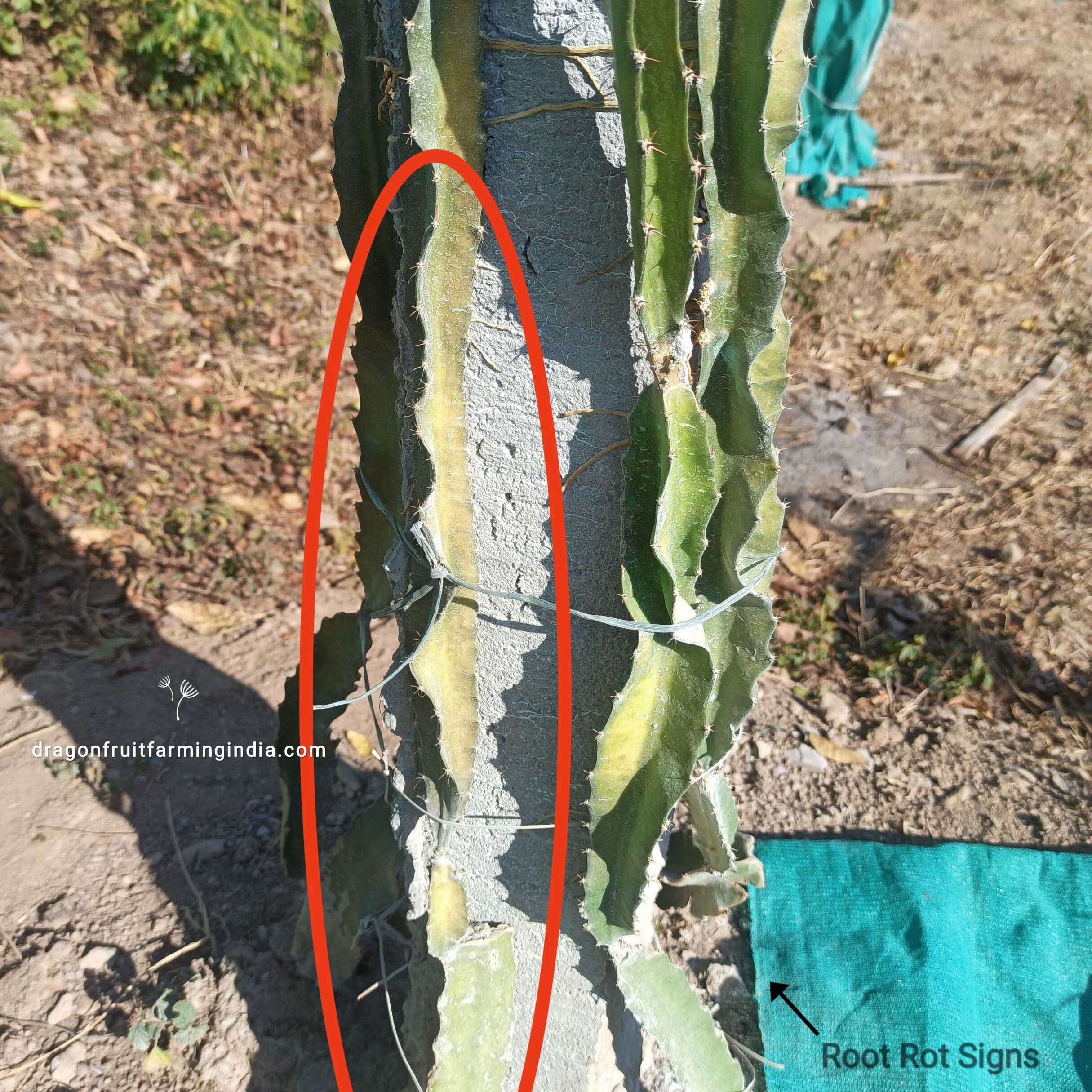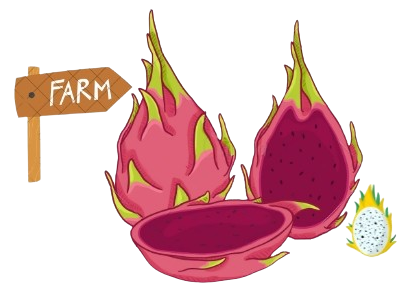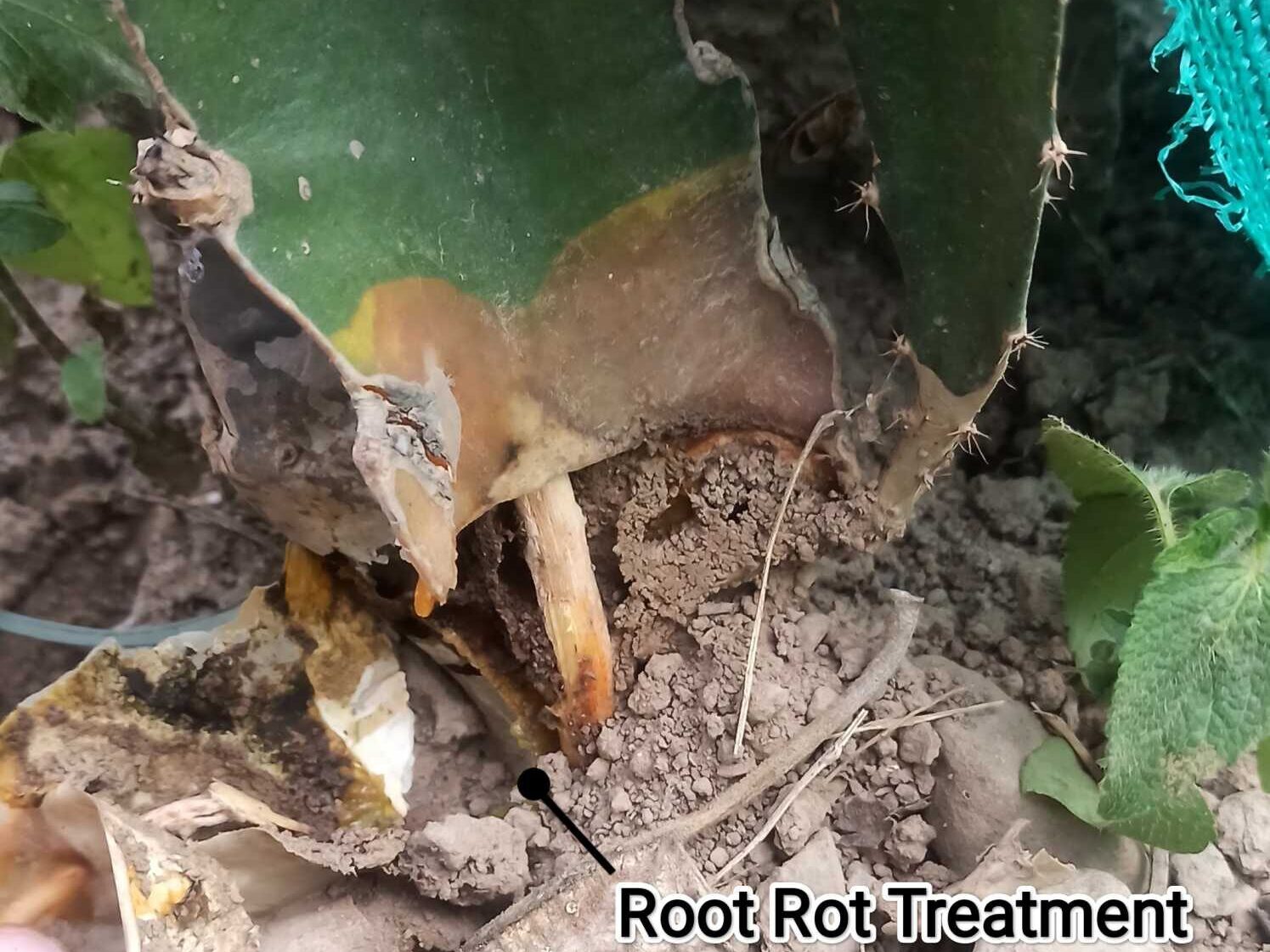Welcome back to another informative blog where I, an experienced dragon fruits farmer from Himachal Pradesh, share practical knowledge straight from the field. Today, we’re going to talk about a very common but often overlooked issue in dragon fruits farming—root rot.
Whether you’re just starting out or have been cultivating for years, understanding this problem is crucial for maintaining healthy crops. So, let’s dive deep and explore everything about root rot—its causes, symptoms, treatment, and prevention. If you’re wondering dragon fruit ki kheti kaise kare effectively and safely, this guide will be a game-changer.
What is Root Rot and Why Does it Happen in Dragon Fruits?

Root rot is a fungal disease that severely affects the roots of dragon fruits, making them rot and turn mushy. It mainly occurs due to:
- Waterlogging or overwatering
- Poor soil drainage
- Infections caused by fungi or bacteria
Since dragon fruit belong to the cactus family, they require minimal water and prefer well-drained soil. Unfortunately, ignoring this basic need can result in root rot, leading to stunted growth and even plant death.
Main Causes of Root Rot in Dragon Fruits
Here are the most common reasons dragon fruit plants suffer from root rot:
| Cause | Description |
|---|---|
| Overwatering | Excess moisture prevents oxygen from reaching the roots, inviting fungus. |
| Poor Drainage | Stagnant water around the roots promotes fungal growth. |
| Contaminated Soil or Tools | Bacteria or fungus from previous crops can spread quickly. |

Always Remember, the key to dragon fruit ki kheti kaise kare lies in balance—especially with watering and soil structure so make a list and be consistent with that.
Symptoms of Root Rot in Dragon Fruit Plants
Identifying root rot early can save your entire crop. Watch out for these clear signs:
- Yellowing of stems or branches
- Stunted growth at any stage
- Foul smell near the root zone
- Roots turning brown or black and feeling mushy
How to Detect Root Rot in Dragon Fruit plant
Let me share some field-tested steps I follow on my farm in Himachal:
1. Inspect the Roots Regularly
Don’t ignore your plant roots. If your dragon fruit start looking weak or unhealthy, gently check the roots. If they appear blackened, soggy, or smell bad, root rot is likely the culprit.
2. Observe the Leaves
Yellowing or shriveled leaves with no visible reason can indicate root issues. Since a plant with rotting roots cannot absorb nutrients, the symptoms often show up in the leaves first.
3. Check Soil Moisture and Drainage
Touch the soil. If it feels excessively wet even days after watering, your drainage might be poor. Modify your setup before root rot takes hold.
Step-by-Step Guide to Treat Root Rot in Dragon Fruit
Follow these steps to treat root rot effectively and save your crop:
Step 1: Identify the Signs
- Yellowing stems
- Stunted growth
- Wilting or drooping
If you see any of these, start treatment immediately.
Step 2: Examine and Prune the Roots
Gently uproot the plant and examine its roots. Use clean, sharp scissors to cut away the affected parts. keep healthy, white roots Only and and dont focus on the rest.
Step 3: Use a Root Rot Fungicides or Natural Remedy
- Chemical Option: Apply Saaf, a well-known root rot fungicide, on the trimmed roots. It helps eliminate any remaining fungal spores.
- Natural Option: Use neem oil or cinnamon powder, which are excellent organic antifungal agents.
✅ Tip: Always sterilize your cutting tools before and after use to prevent spreading the infection.
Step 4: Replant in Fresh, Well-Drained Soil
Now comes a crucial part of the recovery process.
Here’s a proven soil mix I use for dragon fruit farming in Himachal:
| Ingredient | Benefit |
|---|---|
| Cow dung (well-decomposed) | Adds nutrients |
| River sand or cocopeat | Improves drainage |
| Local soil (loamy) | Supports root structure |
This mixture ensures your plant has enough air and water without waterlogging.
Step 5: Correct Your Watering Habits
Water based on your soil type and climate, not a fixed schedule. During monsoon, reduce watering and add slaked lime (bujha chuna) around the roots to absorb excess moisture and add calcium.
Common Mistakes to Avoid After Treating Root Rot
Even after treatment, certain mistakes can cause the problem to return. Avoid these:
❌ Overwatering
Once you’ve treated the roots, avoid giving extra water for at least a few days. Overwatering is the main cause of root rot in dragon fruits.
❌ Ignoring Early Symptoms
Yellowing leaves can sometimes look like sunburn or heat damage. But always double-check—especially during the rainy season.
❌ Using Contaminated Soil or Tools
Dirty tools and reused soil can harbor fungus. Always use clean, sanitized equipment.
Preventing Root Rot in Dragon Fruit Farming
Prevention is always better than cure. Here’s how I keep my crops safe:
| Practice | Why It Helps |
|---|---|
| Raised Beds | Prevents waterlogging |
| Regular Soil Testing | Helps monitor drainage and pH |
| Use of Natural Fungicides | Prevents fungal buildup |
| Monitoring Weather | Helps schedule watering better |
By understanding with all the right information with proper soil, watering, and plant care, you can significantly reduce the chances of root rot.
FAQs on Dragon Fruits and Root Rot
Q1: What type of soil is best for dragon fruit cultivation?
A: Sandy-loam soil is ideal because it drains well and encourages root development. Avoid heavy clay unless modified with sand and organic matter.
Q2: What are the common root diseases in dragon fruits?
A: Root rot and nematodes are the two most common. Both can be controlled with proper soil care and timely use of root rot.
Q3: When is root rot most common in dragon fruits?
A: During the monsoon season, due to excess water and humidity.
Q4: How often should I water my dragon fruit plants?
A: Water based on your local weather and soil type. In summer, water lightly. In winter or monsoon, reduce frequency significantly.
Conclusion
Growing dragon fruit requires more than just planting and watering—it demands attention to every detail. One small mistake, like ignoring drainage, can cause major problems like root rot. But with the right knowledge, experience, and tools like root rot, even serious issues can be tackled effectively.
As someone growing dragon fruits in Himachal for years, I assure you—if you observe your plants closely and act in time, they’ll reward you handsomely.
Final Tips
- Use raised beds or containers if your field has drainage issues.
- Apply neem-based fungicides regularly during humid seasons.
- Test your soil every season.
- Educate workers or helpers on recognizing signs of root rot early.
Got any more questions about dragon fruit or tips on using root rot? Drop a comment or connect with me on social media.
Thank you for reading, and wishing you a healthy, fungus-free dragon fruit harvest!


8 thoughts on “7 Essential Tips for Understanding Root Rot in Dragon Fruits”